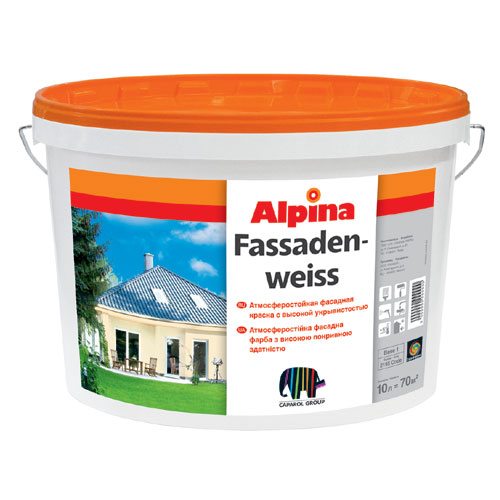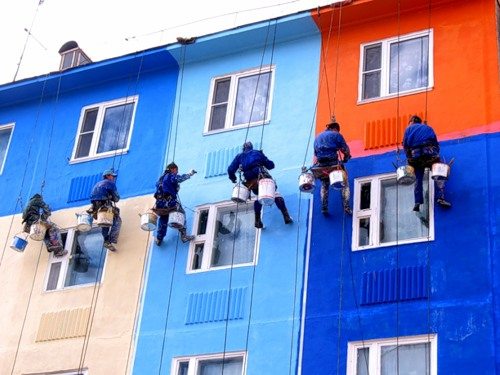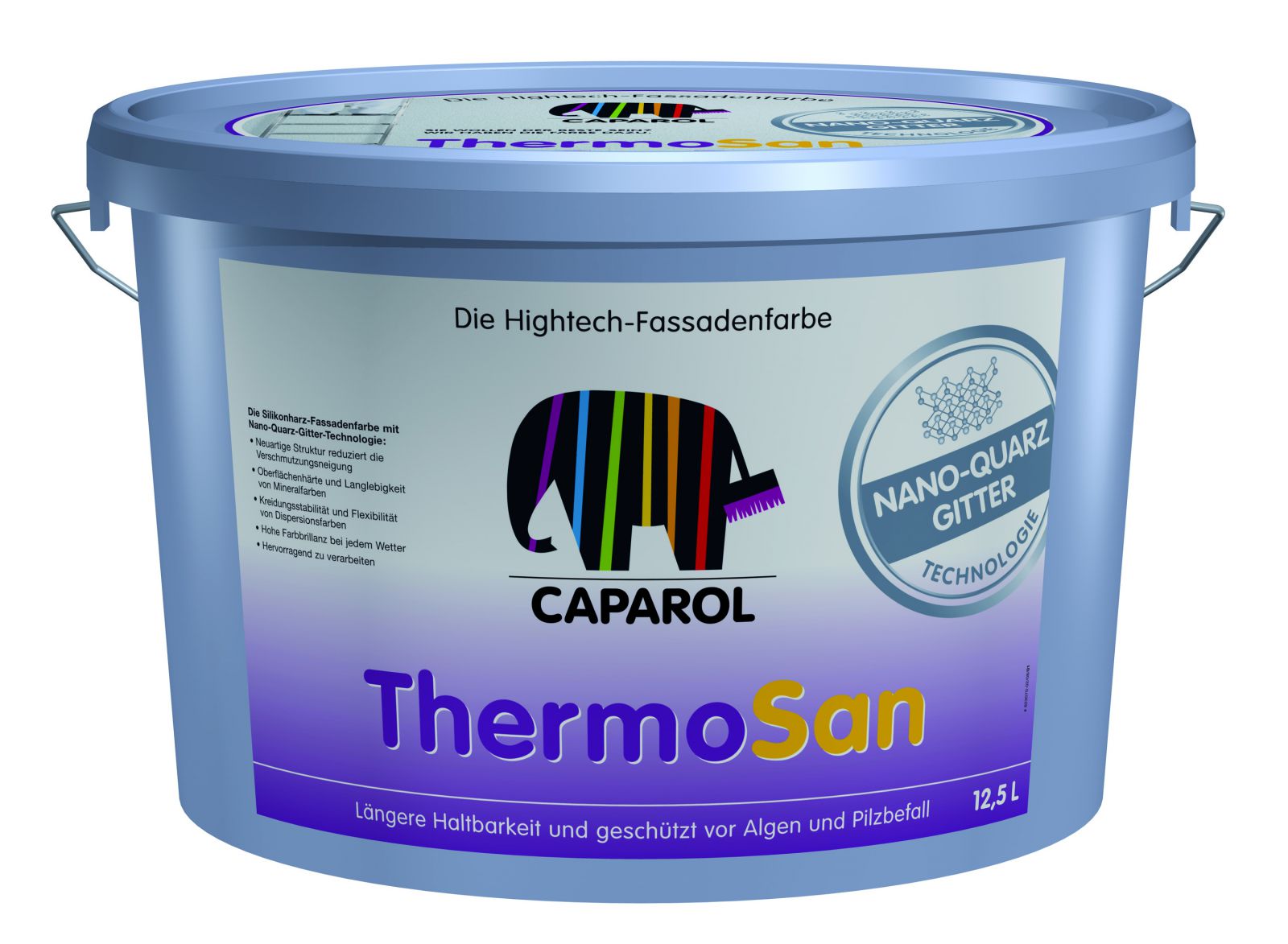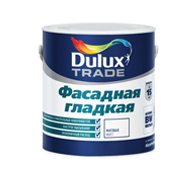If you want the facade of your house to serve for a long time without much repair, it is necessary to periodically carry out its prevention and renovation. One of the most practical ways is to paint the facades of houses and cottages with your own hands.
They can be any - brick, concrete, wood or plastered, the main thing is to choose the right paint and prepare the facade for finishing.
Requirements
At first glance, painting facades is not particularly difficult. You can take any paint in the right amount and apply it to the walls in several layers. At this stage, most home craftsmen fail, or rather after a while. The paint, not lasting even a couple of seasons, begins to lose its original color, cracks or completely flies off the facade.

The answer in this case is simple - material was used that was not intended for such work.
Facade painting technology involves the use of special facade paint, which must meet certain requirements, in particular, it must:
- Be resistant to external influences, including:
- the wind;
- moisture;
- atmospheric precipitation;
- mechanical damage.

- Do not change its original color due to ultraviolet radiation, i.e. remain unchanged with prolonged exposure to bright sunlight.
- Match the material from which the facade of the house is made.
For example:
- it is best to paint a brick facade with acrylic-based latex paint, which has high vapor permeability;
- for - special water-dispersion;
- for concrete - water-based acrylic paint such as "AQUABETOL" or similar.
Advice: you are not satisfied with the cost of painting the facade of the house, do the work yourself, saving almost half the price.

Types of facade paints
Exterior wall painting can be done with a wide variety of paints.
Today, they are most often used for such purposes:
- acrylic;
- based on PVA;
- butadiene styrene.
Let's consider each of the above products in more detail.
Then you can understand at once which option is most suitable for your walls:
- PVA-based materials are not used so often, but they have the most affordable price. Their main drawback is that they are afraid of water;
- Unlike the previous product, styrene-butadiene paints are excellent moisture resistance. But they have another drawback - they cannot withstand UV radiation for a long time and begin to lose their original color;
- for acrylic paints, all parameters are at a high operational level, allowing them to be used as efficiently as possible when painting any facades of industrial and residential buildings. The only significant drawback that can affect your choice is the high cost of the product.

In the photo - silicone-based paint for outdoor use
Advice: when using acrylic paints for outdoor work, the walls get a "breathing" effect, due to which excess moisture will not accumulate in the walls and their service life will significantly increase.
From the above, it became clear that various paints can be used to paint the facades of buildings. However, you need to learn how to choose them correctly for the corresponding walls.

How to paint the facade
During staining, you will have to use a three-component application system.
- First layer- should be covered with an anti-tar material that prevents the formation of stains and blocks the appearance of tar.
- Second- designed to protect the substrate from fungus, insects and bacteria.
- Third- a dye of the required color, which helps the facade to withstand adverse environmental influences.
Tip: Cover areas of external walls that do not require painting with molar tape, paper or other materials.
Do not forget to treat all metal elements and nail heads with a special anti-corrosion primer.
In fact, you will need to carry out the same work as when painting the interior. Only in this case there will be significantly fewer of them.
Tip: cover the glass with plywood or wet the surface and attach a newspaper.
You can also use your own soap and grease mixture.

Don't forget - quality work can only be obtained from a quality tool:
- for water-based paints, prepare synthetic ones;
- for paints containing organic solvents, it is better to prepare brushes made from natural materials.
Remember, the instruction printed on the package label is an instruction manual. Do not deviate from it if you want to get the desired result.
Advice: if you doubt your abilities, then contact the appropriate company, where they will immediately tell you how much it costs to paint the facade of the house, and also determine the work schedule.
Output
Painting the exterior walls of buildings makes it possible to protect the basic materials of the structure from various mechanical and atmospheric influences. Before starting painting, you need to choose the right material that will fit the given criteria.
At the disposal of the home craftsman today there is a wide range of paints for various purposes. The video in this article will help you find additional information on this topic.




